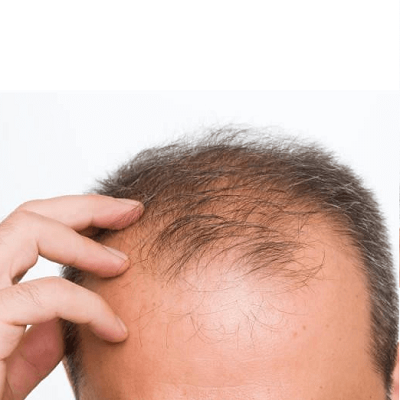Introduction
Hair loss is a common concern affecting millions worldwide, leading many to seek hair transplant procedures as a permanent solution. However, one of the primary concerns potential patients have is the possibility of scarring. While all surgical procedures carry some risk of scarring, advancements in hair transplant techniques have made it possible to achieve natural-looking results with minimal visible scarring. This article explores the Best Hair Transplant Oman techniques that prioritize reducing scarring, helping you make an informed decision.
Understanding Hair Transplant Scarring
Before diving into the specific techniques, it's essential to understand why scarring occurs. Scarring is a natural part of the healing process where the body repairs the skin after it has been injured. In hair transplants, scarring can occur in both the donor and recipient areas, depending on the technique used. The goal is to minimize the visibility of these scars to ensure a seamless and natural appearance.
Follicular Unit Extraction (FUE)
One of the most popular hair transplant techniques for minimal scarring is Follicular Unit Extraction (FUE). This method involves harvesting individual hair follicles from the donor area, usually at the back of the head, and transplanting them into the balding areas. Since FUE does not involve removing a strip of scalp, it leaves behind tiny, dot-like scars that are virtually invisible, even with short hair.
Advantages of FUE:
- Minimal scarring: The small, circular scars are scattered and can be easily concealed.
- Faster recovery: Patients typically experience less post-operative discomfort and quicker healing.
- Flexibility in donor area: Hair can be taken from various parts of the body if needed.
Considerations:
- FUE can be time-consuming, especially for large areas, as each follicle is extracted individually.
- The technique requires a skilled surgeon to ensure the best results with minimal scarring.
Direct Hair Implantation (DHI)
Direct Hair Implantation (DHI) is a variation of the FUE technique that further reduces scarring. In DHI, hair follicles are extracted and immediately implanted into the recipient area using a specialized tool known as a Choi Implanter Pen. This tool allows for precise placement of hair follicles, reducing the trauma to the scalp and, consequently, the potential for scarring.
Advantages of DHI:
- Precision: The Choi Pen allows for more accurate placement of follicles, which can lead to a more natural look.
- Reduced scarring: The method minimizes the handling of hair follicles, decreasing the chances of scarring.
- Faster procedure: Since the extraction and implantation occur simultaneously, the procedure time may be reduced.
Considerations:
- DHI can be more expensive than traditional FUE due to the specialized equipment and expertise required.
- The procedure may take longer for larger areas, requiring multiple sessions.
Robotic Hair Transplantation
Robotic hair transplantation, often associated with the ARTAS system, is another advanced technique that reduces scarring. This method uses robotic precision to assist in the extraction of hair follicles, ensuring consistency and accuracy. The robotic system can analyze the scalp, determine the best follicles to extract, and minimize damage to the surrounding tissue, reducing the likelihood of scarring.
Advantages of Robotic Hair Transplantation:
- Precision and consistency: The robotic system ensures uniform extraction, which can result in less visible scarring.
- Minimally invasive: The accuracy of the robot reduces trauma to the donor area, leading to faster healing and less scarring.
- Ideal for larger areas: The robot can efficiently extract multiple follicles, making it suitable for larger transplant areas.
Considerations:
- The availability of robotic hair transplantation may be limited to specialized clinics.
- The cost can be higher due to the advanced technology involved.
Platelet-Rich Plasma (PRP) Therapy as a Complement
Platelet-Rich Plasma (PRP) therapy is not a hair transplant technique, but it is often used in conjunction with hair transplants to promote healing and reduce scarring. PRP involves injecting the patient’s concentrated platelets into the scalp to accelerate the healing process and improve the overall results of the transplant. When used alongside FUE, DHI, or robotic hair transplants, PRP can enhance recovery and minimize the appearance of scars.
Advantages of PRP Therapy:
- Accelerated healing: PRP helps speed up the recovery process, reducing the visibility of scars.
- Improved hair growth: The therapy can stimulate the growth of transplanted hair, leading to thicker and healthier results.
- Non-invasive: PRP is a simple, non-surgical procedure that can be easily integrated into hair transplant treatment plans.
Considerations:
- PRP therapy requires multiple sessions for optimal results.
- The effectiveness of PRP can vary depending on individual factors, such as the patient’s overall health and hair condition.
Conclusion
Choosing the right hair transplant technique is crucial for achieving natural results with minimal scarring. Follicular Unit Extraction (FUE), Direct Hair Implantation (DHI), and Robotic Hair Transplantation are among the best techniques that prioritize minimizing scarring while providing excellent outcomes. Complementing these methods with Platelet-Rich Plasma (PRP) therapy can further enhance healing and reduce the visibility of scars. When considering a hair transplant, it’s essential to consult with a qualified and experienced surgeon who can guide you toward the best technique for your specific needs. With the right approach, you can enjoy a fuller head of hair without the worry of noticeable scars.





Comments